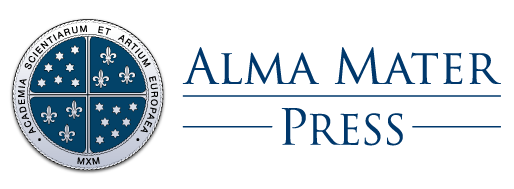Thinking the Interview: On the Epistemology of an Intersubjective Field Method (Part I)
DOI:
https://doi.org/10.33700/1580-7118.16.2.7-44(2014)Keywords:
interview, fieldwork, research methods, ethnography, anthropologyAbstract
The paper presents the complex issue of understanding and conducting an interview as the predominant form of empirical qualitative research. The epistemology of this particular intersubjective field method is viewed from an interdisciplinary perspective, despite the assumption that the interview method as a means of collecting data and information has been brought to the most differentiated uses and sophisticated reflections by the anthropological science. The red thread of the text’s argument is the constant adaptability, changeability and interchangeability of the subject and object positions which are established by researcher and informant in an interview. For an easier grasp of the fluid, flexible and circumstantial construction of the particular interpersonal relationship within an interview situation, the author proposes eight perspectives, based on well-established theories of some important thinkers in the field of the social sciences and humanities, which may be helpful in reflecting on the positions, roles, investments, and doings of the two protagonists within an interview situation: performative perspective, derived from the theory of speech acts (John L. Austin); polyphonic perspective, based on the theory of enunciation (Oswald Ducrot); interpellational perspective, developed on the basis of the theory of ideology (Louis Althusser); discursive perspective, underpinned by the theory of power and authority (Michel Foucault); psychoanalytic perspective, centred around the theory of the unconscious (Sigmund Freud); ethnographic perspective, capped by the theory of reflexivity (Pierre Bourdieu); mnemonic perspective, grounded on the theory of memory (Maurice Halbwachs); dramaturgical perspective, supported by the theory of interaction (Erving Goffman). Whether the interview is taken as a research method, a special social encounter or a series of tasks to be performed by interviewer and interviewee, it is clear that each and every interview is a unique event of specific human contact and communication.
Downloads
References
ALTHUSSER, L. (1980): “Ideologija in ideološki aparati države”, v: Skušek-Močnik, Z., ur., Ideologija in estetski učinek, Cankarjeva založba, Ljubljana, 35–100.
AMIT, V., ur. (2000): Constructing the Field: Ethnographic Fieldwork in the Contemporary World, London & New York, Routledge.
ANTONIJEVIĆ, D. (2009): “Okviri proučavanja ličnih i porodičnih priča o materijalnom gubitku i porazu”, Etnoantropološki problemi, 4(1), 13–35, Beograd.
ANTONIJEVIĆ, D. (2013): Stranac ovde, stranac tamo: Antropološko istraživanje kulturnog identiteta gastarbajtera, Beograd, Srpski genealoški centar, Odeljenje za etnologiju i antropologiju Filozofskog fakulteta.
AUSTIN, J. L. (1990): Kako napravimo kaj z besedami, Ljubljana, Studia humanitatis, ŠKUC Filozofske fakultete.
BROWN, S. G., DOBRIN, S. I. (2004): Ethnography Unbound: From Theory Shock to Critical Praxis, New York, State University of New York Press.
BUNZL, M. (2000): “The Prague Experience: Gay Male Sex Tourism and the Neo-Colonial Invention of an Embodied Border”, v: Berdahl, D. & Bunzl, M. & Lampland, M., ur., Altering States: Ethnographies of the Transition in Eastern Europe and the former Soviet Union, University of Michigan Press, Ann Arbor, str. 70–95.
CAUNCE, S. (1994): Oral History and the local Historian: Approaches to Local Historian, London & New York, Longman.
CLEMENTS, W. M. (1980): “Personal Narrative, the Interview Context, and the Question of Tradition”, Western Folklore, 39(2), 106–112.
CLIFFORD, J. (1983): “On Ethnographic Authority”, Representations I., 2, 118–146.
CLIFFORD, J. (1988): The Predicament of Culture: Twentieth-Century Etnography, Literature, and Art, Cambridge, Mass. & London, Harvard University Press.
CLIFFORD, J., MARCUS, G. E. (1986): Writing Culture: The Poetics and Politics of Ethnography, Berkeley, University of California Press.
DUCROT, O. (1988): Izrekanje in izrečeno, Ljubljana, Studia humanitatis, ŠKUC Filozofske fakultete.
DUCROT, O. (1996): Slovenian Lectures / Conférences slovènes. Argumentative Semantics / Sémantique argumentative, ur. Igor Ž. Žagar (bilingual, English-French edition; from Fr. to Eng. translated by Sebastian McEvoy), Ljubljana, ISH – Ljubljana Graduate School of the Humanities.
FABIAN, J. (1983): Time and the Other: How Anthropology Makes Its Objects, New York, Columbia University Press.
FREEMAN, D. (1983): Margaret Mead and Samoa: The Making and Unmaking of an Anthropological Myth, Cambridge, Harvard University Press.
FREEMAN, D. (1997): Margaret Mead and the Heretic: The Making and Unmaking of an Anthropological Myth, New York, Penguin Putnam.
FREEMAN, D. (1998): The Fateful Hoaxing of Margaret Mead: A Historical Analysis of Her Samoan Research, Boulder (CO), Westview Press.
HAMMERSLEY, M., ATKINSON, P. (1992): Ethnography: Principles in Practise, London, Routledge.
JAKOBSON, R. (1988): Lingvistični in drugi spisi, poglavje “Lingvistika in poetika”, odlomek – 147–161, Ljubljana, Studia humanitatis.
JAMBREŠIĆ KIRIN, R. (1995): “Svjedočenje i povijesno pamćenje: O pripovjednom posredovanju osobnog iskustva”, Narodna umjetnost, 32(2), 165–187.
JAMBREŠIĆ KIRIN, R. (2000): “Personal Narratives on War: A Challenge to Women’s Essays and Ethnography in Croatia”, Topos, 2(1/2), 285–322.
KOTNIK, V. (2001): “Kako so preživele: O ženskem doživljanju vojnega nasilja na Kozjanskem”, Anthropos, 33(1/3), 289–318.
LEŠNIK, B. (1997): Subjekt v analizi, Ljubljana, Studia humanitatis.
MEAD, M. (1928): Coming of Age in Samoa: A Psychological Study of Primitive Youth for Western Civilisation, New York, William Morrow & Company.
MICHRINA, B. P., RICHARDS, C. A, (1996): Person to Person: Fieldwork, Dialogue, and the Hermeneutic Method, Albany, State University of New York Press.
RAMŠAK, M. (2003): Portret glasov: Raziskave življenjskih zgodb v etnologiji – na primeru koroških Slovencev, Ljubljana, Društvo za proučevanje zgodovine, antropologije in književnosti.
ROBINSON, J. (1981): “Personal Narratives Reconsidered”, Journal of American Folklore, 94(371), 58–85.
STOCKING, G. W. jr., ur. (1983): Observers Observed: Essays on Ethnographic Fieldwork, Madison, The University of Wisconsin Press.
ŠUMI, I. (2000): Kultura, etničnost, mejnost: Konstrukcije različnosti v antropološki perspektivi, Ljubljana, Založba ZRC SAZU.
THOMPSON, P. (1988): The Voice of the Past, Second Edition, Oxford & New York, Oxford University Press.
TITON, J. T. (1980): “The Life Story”, Journal of American Folklore, 93(369), 276–292.
TONKIN, E. (1992): Narrating our Past: The Social Construction of Oral History, Cambridge, Cambridge University Press.
VAN MAANEN, J., ur. (1995): Representation in Ethnography, Thousand Oaks & London & New Delhi, Sage Publications.
YOW, V. R. (1994): Recording Oral History: A Practical Guide for Social Scientists, Thousand Oaks & London & New Delhi, Sage Publications.

